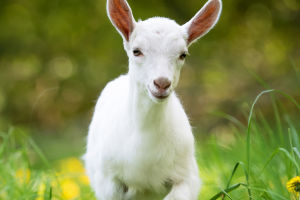When discussing Japanese tea varieties, the first one that often comes to mind is matcha. However, in addition to matcha, Japan boasts a wide range of other tea types.
The tea culture was initially introduced to Japan by monks during the Tang Dynasty, and over time, it spread among the upper class and ordinary people.
Blending with their own cultural influences, the Zen spirit became an integral part of Japanese tea culture, giving rise to the traditional practice of the "tea ceremony."
Japanese people describe the three major types of Japanese tea as follows: "Shizuoka tea boasts beautiful color, Uji tea is renowned for its fragrance, and Sayama tea offers a rich taste." Sayama tea stands out due to its unique "Sayama fire roasting" process, which imparts a sweet and rich flavor.
If you are a fan of Japanese tea, we recommend visiting Sayama to experience its distinct tea flavors firsthand.
In Japan, the majority of tea produced is green tea, which is made by steaming the leaves and then pan-firing them, followed by exposure to direct sunlight. This process gives the tea a vibrant green color and preserves its natural flavors.
The history of roasted tea in Japan can be traced back many centuries. Over a hundred years ago, this style of tea made its way from the capital to other regions. Roasted tea not only possesses a robust flavor but also has excellent storage capabilities.
In ancient times, this type of tea was highly appreciated for its unique taste. Moreover, drinking roasted tea often imparts a sense of slimming down, making it popular for its potential health benefits in today's society.
Wheat tea, a beverage we may be familiar with, has a robust flavor. In many regions of Japan and Korea, locals enjoy cold steeped wheat tea, as the roasted wheat can be consumed directly. Alternatively, steeping it in hot water produces a delicious tea-like taste.
Wheat tea also aids digestion by promoting intestinal health, making it particularly popular among middle-aged and elderly individuals in Japan.
Oolong tea is another popular variety in Japan. Noted for its ability to reduce blood pressure and promote skin health, oolong tea is enjoyed by people of all ages.
Genmaicha, a blend of roasted brown rice and sencha tea leaves, is characterized by its delightful aroma. This unique combination creates a distinct flavor profile that appeals to many tea enthusiasts.
Shizuoka tea, which originated in 1244 when a monk brought tea seeds from China and planted them, currently accounts for about 40% of Japan's tea production.
It is renowned for its strong aroma and excellent taste, with high-quality tea predominantly cultivated in mountainous areas such as Kawane, Tenryu, and Honzan, which experience significant temperature variations.
On the other hand, Sayama tea, grown in the Kawagoe region, emerged during the middle of the Edo period and flourished as a specialty product. Its defining characteristic lies in the unique "Sayama Fire In" processing method, which imparts a strong flavor to the tea leaves.
This is why it is said that "the color of tea stops at Shizuoka, the aroma stops at Uji, and the taste stops at Sayama."
Japanese tea culture extends far beyond matcha. With its rich history and diverse flavors, exploring the various types of Japanese tea is a delightful experience.
Whether you prefer the aroma of Uji tea, the color of Shizuoka tea, or the taste of Sayama tea, there is something to suit every tea lover's palate.


